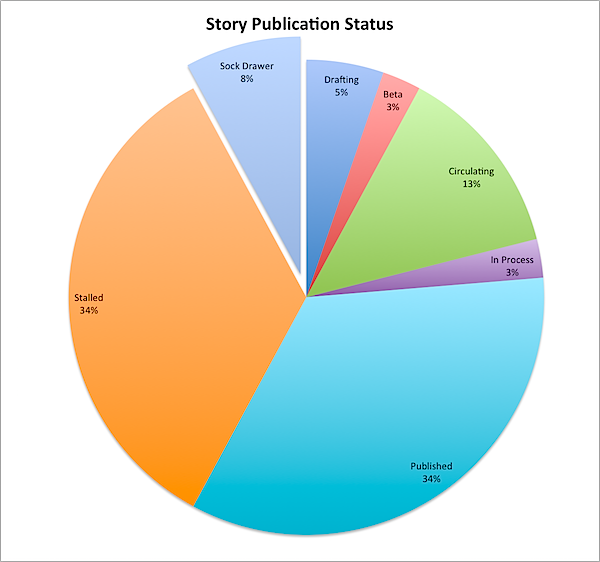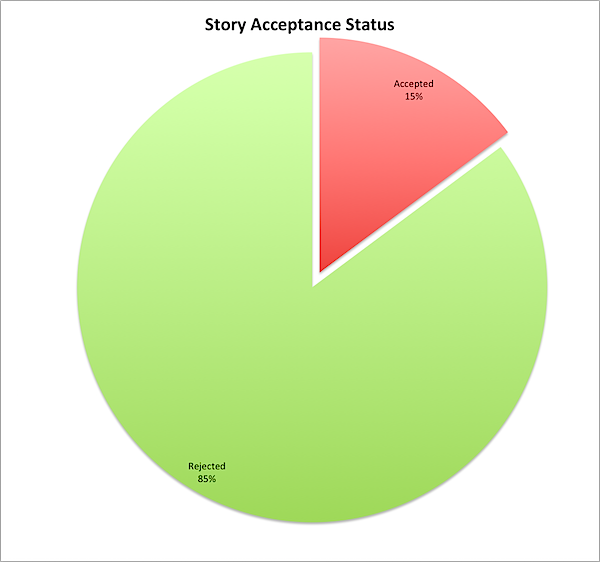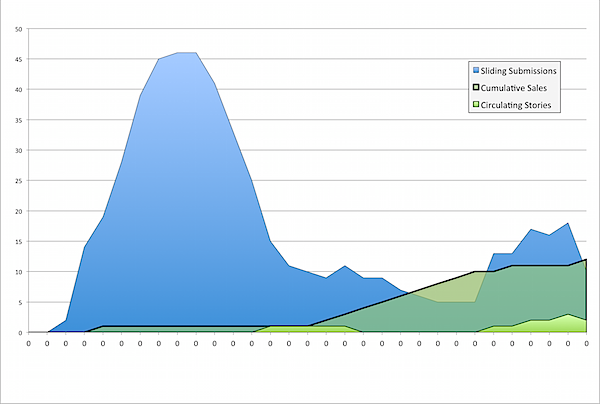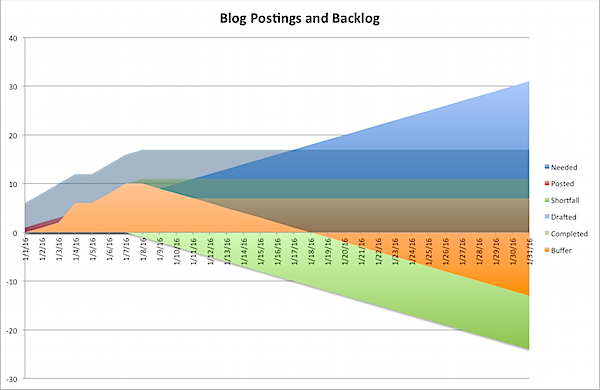
What to do with the stories in your sock drawer?
For those of you who don’t know, the “sock drawer” is where short stories go to die, named after the place you file manuscripts away after you’ve exhausted your efforts to sell, edit, or burn them. Stories go through a life cycle:
- You Get the Idea: Sometimes, this is no more than a title. Most people stop here.
- You Start the Draft: You actually start writing! Most people never get here.
- You Finish the Draft! Most people who get to Stage 2 never get to Stage 3. Believe it or not, this is the hardest part.
- You Edit the Draft! Some people get stuck forever here, or skip this entirely, like bloggers. 🙂
- You Let Other People See It! I call this the ”beta” stage because I generally don’t let people see stuff until I’ve edited it.
- You Send It Out! You send the story or novel out for publication.
- It’s Accepted Right Away! Editors ALWAYS accept stories, right?
- ???
- Profit!
Actually, MOST of the time markets don’t accept what you send them. From what you see above, it seems like I’ve got a pretty good acceptance rate, but that’s actually counting by stories. If we instead look at how many times I sent them out:

Yeah. And even that’s a bit exaggerated, since I get invited to write a lot of stories, so if i was to tease the data apart to look at my cold-call rejection rate, I would get very depressed. So really there are a few more stages which can happen after you send things out:
- You Keep Circulating Your Work: If first you don’t succeed, try the next magazine or site on the list.
- You Revise Your Work: A clever editor’s comment, or more insight, leads you to rework your story. Go back to Step 4.
- You Get Stuck: You don’t know how to fix your work, but aren’t ready to give up yet. You’re essentially at Step 3.
- You Give Up: You convince yourself the work can’t be fixed … and dump it in your sock drawer.
As you saw from the first diagram, I’ve got a small handful of stories in my sock drawer … not that I’ll never think of going back to them, but if so, it will probably be a ground-up rewrite harvesting the manuscript for whatever good ideas I’ve got. But I also have a larger tranche of stories I haven’t quite given up on yet, ones I think I can salvage, but which aren’t as important as my novels.
But if I’m not working on them, are they in the sock drawer, or not? Some of those stories went out to a dozen or more places and got as many rejections. Others I sent to one or two places, or nowhere. And if I read them again, what would I think? Is it worth going back to them? If it’s a choice between working on Dakota Frost, Cinnamon Frost, Jeremiah Willstone, or Serendipity the Centaur, I’m going to choose one of them over a short story I wrote back in 2001.
So why am I digging back at the boundary of Stalled and the Sock Drawer?
Recently, a friend told me about a short story submission deadline that was closing fast. I looked at my list of stories I’ve sent out to find one to send … but I’ve gotten much better at sending out my work, so, surprisingly, I didn’t have anything to send. So I had a choice: let the deadline pass … or find my best unpublished story and send it out.
I actually do have 2 or 3 stories on my shortlist of “this story is really good, but it never made it” but I want to edit these before I send them out again, so I thought about letting the deadline pass. Then I realized that if I never go back to those stories, I might as well consider them dead. I always mean to revise them – I have a folder of comments and notes on them – but somehow I never get around to it. So I needed to commit: lob the lot into the sock drawer, or take action.
I found the best of these that fit within the word count limits of the magazine. Then I reformatted it according to William Shunn’s manuscript guidelines, to give it the best chance for success. The very act of reformatting it gave me a new eye on the story … and I realized that inside that 10,000 word manuscript was a great 8,000 word story screaming to get out.
I didn’t have time to make those changes before the deadline. I did a quick edit, I fixed a few minor warts … and I sent it out.
If they like it, hopefully by the time they get back to me, I’ll have a great edit ready.
If not … I’ll have a great edit ready for someone else.
In the meantime, I added a tick to the count of Circulating Stories in the following graph…

… and blogging about it added a tick to this graph:

Since I’ve seen, and done the alternative … sitting on stories forever … I think this is was the “write” thing to do.
-the Centaur